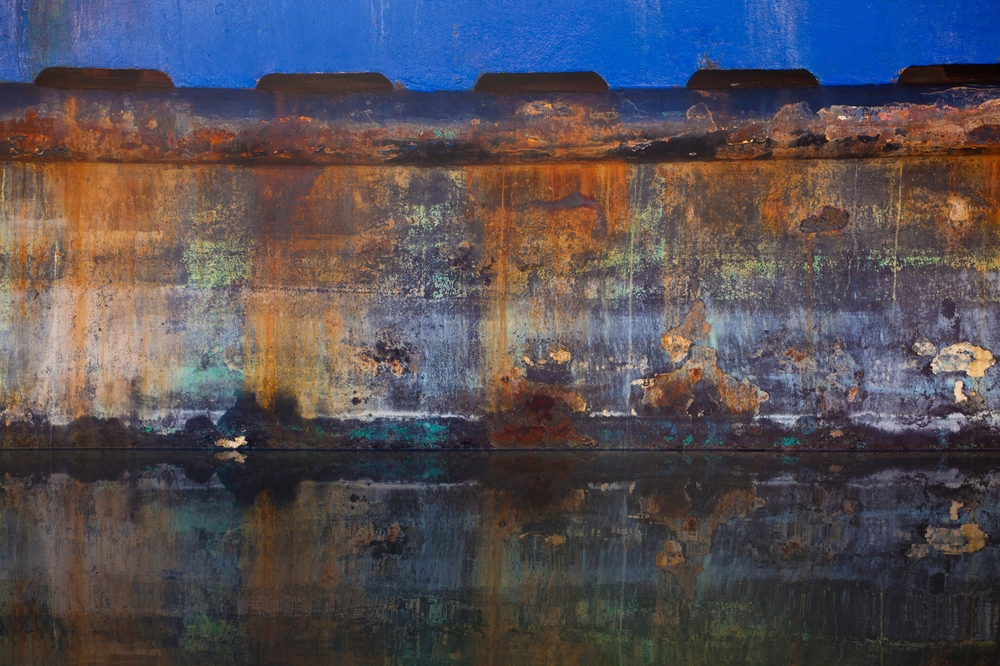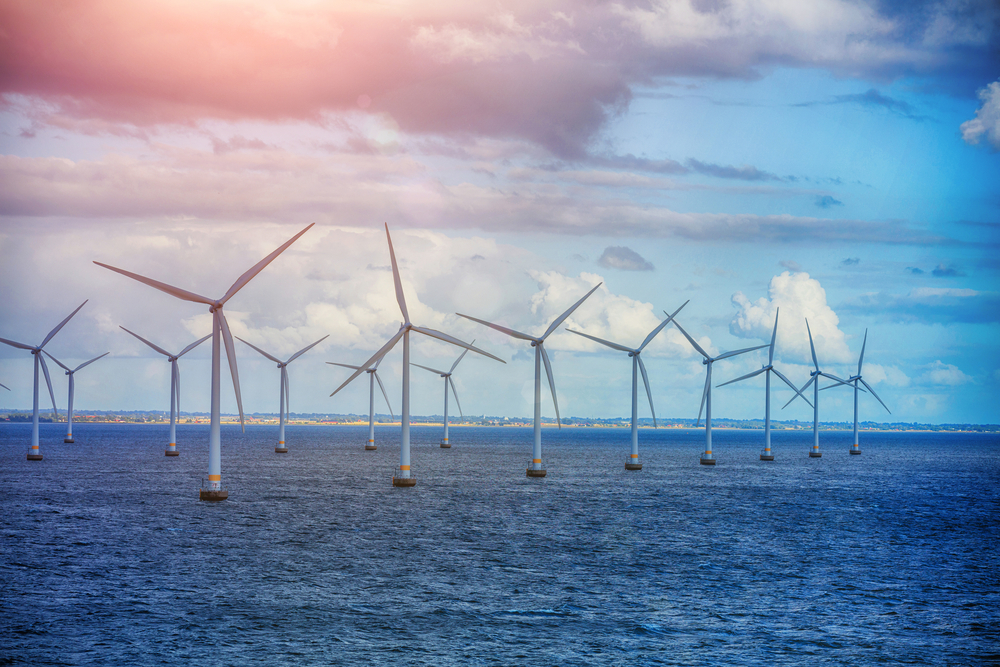Corrosion in marine environments is one of the main problems that structures exposed to this type of corrosive atmosphere present, which must be considered in the different procedures of the manufacturing and production process in the development of new metallic materials. This type of corrosion is characterized by being an electrochemical phenomenon that causes generally uniform wear, to which iron and its alloys are very susceptible. It is generated by a natural mechanism and occurs spontaneously, destroying or reducing the structural properties of the materials. materials in service. These, when exposed to the weather, give rise to the occurrence of the oxidation phenomenon on their surface, mainly forming iron oxide[1], (Figure 1).

Corrosion in offshore structures depends on specific factors such as water temperature, salinity, the presence of chlorides, oxygen content, and current speed, as well as the different areas to which they are exposed, etc.
The protection against corrosion of metallic structures exposed in the offshore or onshore marine environment is decisive, and must be estimated during the design of these structures to resist the aggressiveness of this type of environment, most of which are protected with coatings. There is no single method to prevent the different types of corrosion, it cannot be avoided but it can be controlled either by manipulating the material, the metal solution interface, or the corrosive medium.
Among the protection methods according to their relevance and importance are: the design, the selection of materials and alloys resistant to corrosion, metallic and non-metallic coatings, the cathodic protection method, either by sacrificial anodes or impressed current. , and corrosion inhibitors.
Currently, a series of investigations focused on the development of new anticorrosive methods for marine structures are being carried out, in order to determine the most appropriate control method that allows the protection of these structures in an environment as aggressive as marine atmospheres.
The most innovative studies in this field of corrosion are presented below:
Studies carried out by the CTC Component Technology Center, in Catambria, Spain [2]. “Corrosion is one of the biggest problems faced by platforms located in the marine environment. It represents a great economic expense, since it affects steel structures and causes their physical properties to decrease, completely damaging the structure, its stability and, therefore, causing numerous risks This CTC Technological Center has extensive experience developing innovative paints and coatings with improved capacities against corrosion, as well as antifouling, another element of the marine environment that causes damage to structures metallic”.
In its results obtained, this Technological Center has managed to develop a wide variety of innovative paints and coatings, improving their properties against corrosion in marine environments that cause damage to metal structures.
«Smart Coating» coatings
Smart coatings are innovative coatings that can react spontaneously, due to built-in response mechanisms to stimuli. The functionality obtained from this class of coatings at the metal-solution interface in aggressive marine environments has led to advances in anticorrosive studies and applications, which overcomes the limitations in the use of conventional coatings: self-healing, antifouling and self-cleaning for corrosion inhibition. of metallic materials. The presence of high quality nanoparticles in coating formulations has overcome the effects of microparticles. These have unleashed unprecedented functionality in smart coatings.
Smart coatings respond to single or multiple external stimuli such as light, dirt, pH changes, temperature, aggressive liquids, biofouling, impact, fatigue, etc. and have demonstrated excellent barrier properties with scratch resistance, cure-in-situ, superhydrophobicity, superoleophilicity, high optical transmission, thermal stability, and resistance to strong acids, etc., resulting in long service life of coatings and materials. protected metal.
Paint coatings designed for protection against corrosion must offer an effective physical barrier, preventing the access of aggressive species to the metal interface. But in addition to this physical barrier, the coatings must be capable of trying to inhibit the corrosion process in the event that said barrier is interrupted, either by mechanical damage, or because aggressive species have been able to pass through the coating, through its pore network, and reach the metal/paint interface. For this reason, anticorrosive coatings require the use of corrosion inhibitor pigments in their formulation. In general, in the protection of metallic elements, a single painting is not used, but rather a set of them that is called a painting system or scheme.
Mechanism of action
A new generation of anti-corrosion coatings that possesses passive matrix functionality and actively responds to changes in the local environment has aroused great interest among materials scientists. Corrosion is one of the most important destructive processes involved in the loss of materials, and its prevention is essential to protect investments. Active corrosion protection aims to restore material properties (functionality) when the matrix of the passive coating is broken and corrosion of the substrate has begun. The coating has to release the active and restorative material within a short time after the integrity of the coating has been breached. This acts as a local trigger for the mechanism that heals the defect.
Figure 2 shows the performance of these types of coatings in the presence of a defect (crack) in the paint. In this case, when the damage generated breaks the capsule, the monomer it contains is released, which reacts with the existing catalyst in the coating, to seal the crack [3,4].
 | These types of coatings are based on their ability to automatically and independently repair any type of imperfection or damage that occurs in the coating. To achieve this effect, two types of technologies are used: addition of polymeric nanocapsules or inhibiting potential corrosion areas through inhibitors. The most used method is to add microcapsules that act directly on damaged areas. These microcapsules contain some type of liquid, solid or gaseous nanoparticle, which gives rise to the repair of the coating |
Figure 2. Performance of intelligent self-healing coatings [3,4]
Corrosion protection is a requirement for all structures exposed to a saline environment. Although most surfaces are designed to withstand the environment, coatings are necessary to effectively protect them.
Characteristics of the best coatings for marine environments
The environmental conditions at sea are unforgiving, and if proper care and coatings are not provided, the saline environment will return steel and other metals to their original state: rust.
There is no one coating system for all situations, however, some of the best coatings are known to be solvent-free, 100% solids by volume, abrasion resistant, immersion resistant, and high bond strength. marine organisms, as well as weathering.
The correct choice of protection systems, proper planning and good application practices avoid costly repairs and ensure the integrity of the structures. Therefore, it is best to advise you with experts in the field who can provide you with tailored solutions.
Applications in marine environments
Cuando se trata de tareas de protección contra la corrosión, las operaciones que se realizan en la industria del gas y el petróleo, requieren una inversión de capital sustancial. The areas that comprise the splash zones of offshore platforms face severe conditions, both in terms of their exposure to ultraviolet radiation
and constant cycles of wetting and drying as well as impact and abrasion caused by floating debris, hurricanes, and even floating sheets of ice.
If left unpainted, the corrosion rate of steel in splash zones would easily exceed 250 microns per year. This means that the steel must be protected against corrosion, with painting being the most widely used protection method.
Anti-corrosion paint systems typically consist of several coats that form a barrier against the penetration of water and contaminants through coatings applied to steel. However, justice can only be done to the properties of the paint systems if they have been properly applied and if, previously, an optimal preparation of the surface has been carried out. It has been widely demonstrated that the quality of surface preparation is directly related to the useful life of a system.
Getting it right from the start is paramount in the oil and gas industry, as both access and timing are obstacles when it comes to applying maintenance paint systems.
Currently “The NANOMAR project aims to establish a lasting scientific collaboration network between European research institutions and scientists from two BRIC countries, namely Brazil and the Russian Federation. In pursuit of the development of new “smart sustainable materials” for applications offshore (Figure 3), in the development of new functional nanocontainers, new protective coatings, as well as teams with recognized experience in the characterization of anti-corrosion coatings.

The main scientific objective of the proposal is the development of a new generation of “smart” bifunctional coatings that combine self-healing anti-corrosion ability with antifouling properties for offshore applications such as oil drilling rigs and wind farms.
The main scientific approach on which this project is based is the controlled release of the active species (corrosion inhibitor and biocidal agent, respectively) from nanostructured containers (nanocontainers) in damaged areas of the coating.
Anticorrosive coatings for offshore wind farms
One of the biggest challenges for the 21st century is to guarantee the energy supply paying special attention to renewable energy sources. Smart anti-corrosion and anti-fouling coatings have been created that resist the harsh conditions of the marine environment and, therefore, will help to meet these objectives.
Offshore wind farms (Figure 4) are one of the most promising technologies to be able to meet the global energy demand in a sustainable way. The EU supported the development of smart materials to reduce corrosion and improve fouling protection for marine structures through funding of the ‘Nanocontainer-based active coatings for maritime applications’ (NANOMAR) project.
Nanocontainers are tiny compartments that store molecules for controlled release. Its use in coatings to release biocides and corrosion inhibitors in response to coating damage has been investigated. The first step was to integrate each of the biocides or corrosion inhibitors into coatings to test their individual performance in controlled experiments.

The team used electrochemical techniques and accelerated tests for corrosion resistance and evaluation of antifouling capacity during exposure to offshore platforms. The most promising nanoadditives were mixed into a multifunctional coating and tested in operation on an offshore platform in Brazil.
Studies are currently being carried out on the selection of the most suitable multifunctional system for its industrial implementation. The development of a new generation of smart and sustainable coatings will benefit many sectors. Among them, it is worth highlighting the energy and maritime transport sectors, true pillars of many economies and vital activities for socio-economic progress worldwide.
Source:
[1] (NACE, 1981, Uhlig, 1973).
[2] Grinon Rosa, https://centrotecnologicocctc.com/2021/10/20/investigacion-e-innovacion-ganar-la-batalla-la-corrosion/
[3] https://ingenieromarino.com/recubrimientos-basados-en-nanoparticulas-para-aplicaciones-offshore.
4. Abdel and M. Madkour, “Potential use of smart coatings for corrosion protection of metals and alloys : A review,” J. Mol. Liq., vol. 253, pp. 11–22, 2018.


